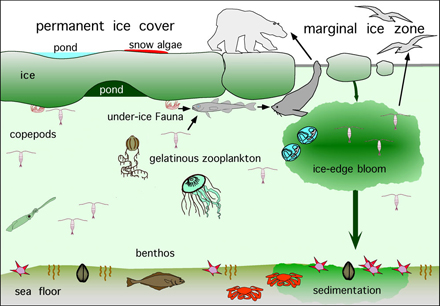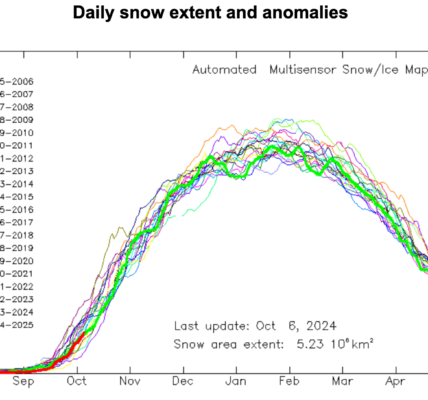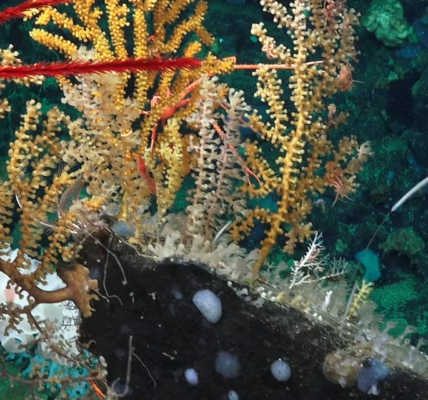New report reveals rapid temperature rises and their devastating effects on the region’s carbon balance and biodiversity.

The Arctic is becoming increasingly perilous as the region demonstrates alarming shifts away from being Earth’s cooler refuge. According to the 2024 Arctic Report Card, released on February 1, 2025, the combination of thawing permafrost, increased microbial activity, and frequent wildfires means the Arctic is now emitting more carbon dioxide than it can store. This transformation is leading to dire consequences for both the ecosystem and the vulnerable wildlife residing within it.
For the past nine years, the Arctic has recorded the highest temperatures ever. The changes resulting from this warming process are not just statistical; they’re tangible and troubling. Tundra caribou populations have fallen dramatically, declining by 65% over the last two to three decades. These figures are particularly alarming for scientists who see the Arctic’s role as Earth’s snow and ice custodian rapidly unraveling.
Twila Moon, deputy lead scientist at the National Snow and Ice Data Center, commented on the situation: “It’s not particularly surprising, but it’s still really sobering.” Her insights underline the extent to which climate change is reshaping not only the natural landscapes but also the lives of the people who depend on these ecosystems. With the Arctic historically serving as a carbon sink—an area absorbing more carbon dioxide than it emits—the shift to becoming a net emitter marks one of the most significant changes visible to scientists.
What has historically been viewed as Earth’s freezer, capable of storing carbon for thousands of years due to its permafrost, is undergoing rapid changes. The rising temperatures are causing permafrost to melt, allowing previously sequestered carbon to be released back to the atmosphere, which some researchers are now considering as leading to ‘global weirding’—a term intended to convey the unpredictable, more erratic behaviors observed within global climate patterns.
Wildfires play another significant role. The 2024 wildfires north of the Arctic Circle have released approximately 42.3 million metric tons of CO2, marking the second-highest annual emissions from fires recorded for the Arctic. The increasing frequency of these wildfires, combined with the thawing permafrost, is creating unmanageable pressure on the Arctic’s fragile ecosystems.
Further complicate matters, the warming temperatures are affecting animal populations. While some smaller herds of coastal caribou show recovery, larger inland herds are still at historic lows. The plants they rely on are being overrun by shrubbier species, making it ever more difficult for them to find food. “Greening isn’t as positive as it may sound,” Moon added, emphasizing the challenges posed by changing vegetation patterns.
The repercussions of these changes extend beyond animal populations. The Arctic’s role as Earth’s cooling system is diminishing. The large expanses of white sea ice typically reflect sunlight away from the planet, but as the ice melts, it reveals darker ocean waters capable of absorbing heat. This feedback loop leads to warming trends extending beyond the Arctic region, affecting global weather patterns. Indeed, September 2024 saw one of the lowest sea ice extents on record, with the remaining ice predominantly thinner and younger.
Of course, the destruction does not stop at wildlife or carbon emissions. An international study out of UC Santa Cruz suggests faster temperature changes could lead to the loss of entire species, setting off cascading effects throughout various ecosystems. Malin Pinsky, the lead author of the study, articulated the seriousness of the situation by saying, “The worry is when you start to lose some cards,” painting a vivid picture of ecological instability due to rapid climate change.
One specific area of concern is the so-called “Last Ice Area,” which has been perceived as resistant to climate upheavals. A recent study from McGill University suggests it, too, may disappear much more rapidly than previously thought—potentially within just ten years following the complete summer melting of the Arctic Ocean. With ice transport disrupting established patterns due to climate change, this unique habitat is now under grave threat.
Bruno Tremblay, one of the authors of this study, noted, “If warming is not controlled, current projections are becoming increasingly pessimistic.” He stressed the importance of conservation efforts, as the ecosystem housed here—home to polar bears, seals, and walruses—faces uncertain futures.
The necessity for coordinated action is glaring: if ecosystems like the Last Ice Area are to survive, immediate and sustainable climate measures are pivotal. Indigenous communities, who are deeply intertwined with these environments, advocate for more comprehensive protections alongside scientific approaches.
We might be witnessing what Moon refers to as “a new and different Arctic”. This is not just about adjusting; it’s about responding to our ever-changing reality. Ignoring these shifts—whether through continued climate complacency or neglect—could push the Arctic and global environments closer to tipping points from which there may be no return. Supporting Indigenous leadership and climate action has never been more urgent. Our future, alongside the planet’s, may depend on it.




Great work bringing attention to this pressing issue! The feedback from researchers regarding the threats posed by warming temperatures in the Arctic should serve as a catalyst for change in our environmental policies.
I appreciate the insights shared here about Arctic warming. It’s crucial for us to understand how this phenomenon impacts not only the region but also global ecosystems. More discussions like this are needed to drive home the urgency of protecting wildlife affected by these changes.